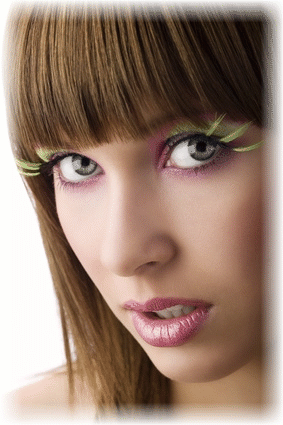PHAGANS' GRANTS PASS COLLEGE OF BEAUTY |
 | PHAGANS' GRANTS PASS
Accredited since: 1995 |
|
Egyptian hairstyles varied with age, gender and social status. Children’s heads were shaved off or cut short except for a long lock of hair left on the side of the head, this s-shaped lock was depicted by the hieroglyphic symbol of a child or youth. Both girls and boys wore this style until the onset of puberty. Older boys often shaved their heads, while girls had ponytails hanging down the center of the back. Egyptian men had short hair, leaving their ears visible. Another hairstyle for men was distinctive short curls covering the ears shaping a bend from temple to nape. Women's hairstyles were more unique than those of men. Women generally preferred a smooth, close coiffure, a natural wave and long curl. Women in the Old Kingdom preferred to have short cuts or chin length bobs. However in the New Kingdom they had long hair or touted a wig. Women tied and decorated their head with flowers and linen ribbons. A stylized golden lotus blossom was the preferred adornment. Poor people used more simple and inexpensive ornaments of petals and berries. Children decorated their heads with amulets of small fish to protect from the dangers of the Nile. Children sometimes used rings or clasps, ancient Egyptians wore headbands around their heads or held their hair in place with ivory and metal hairpins. Wigs were very popular and worn by men, women and children. They were adorned both inside and outside of the house. Egyptians put on a new wig each day and wigs were greatly varied in styles. The primary function of the wig was as a headdress for special occasions, such as ceremonies and banquets. Wigs were curled or sometimes made with a succession of plaits. Only queens or noble ladies could wear wigs of long hair separated into three parts, the so-called goddress. |
Return to Main Page |